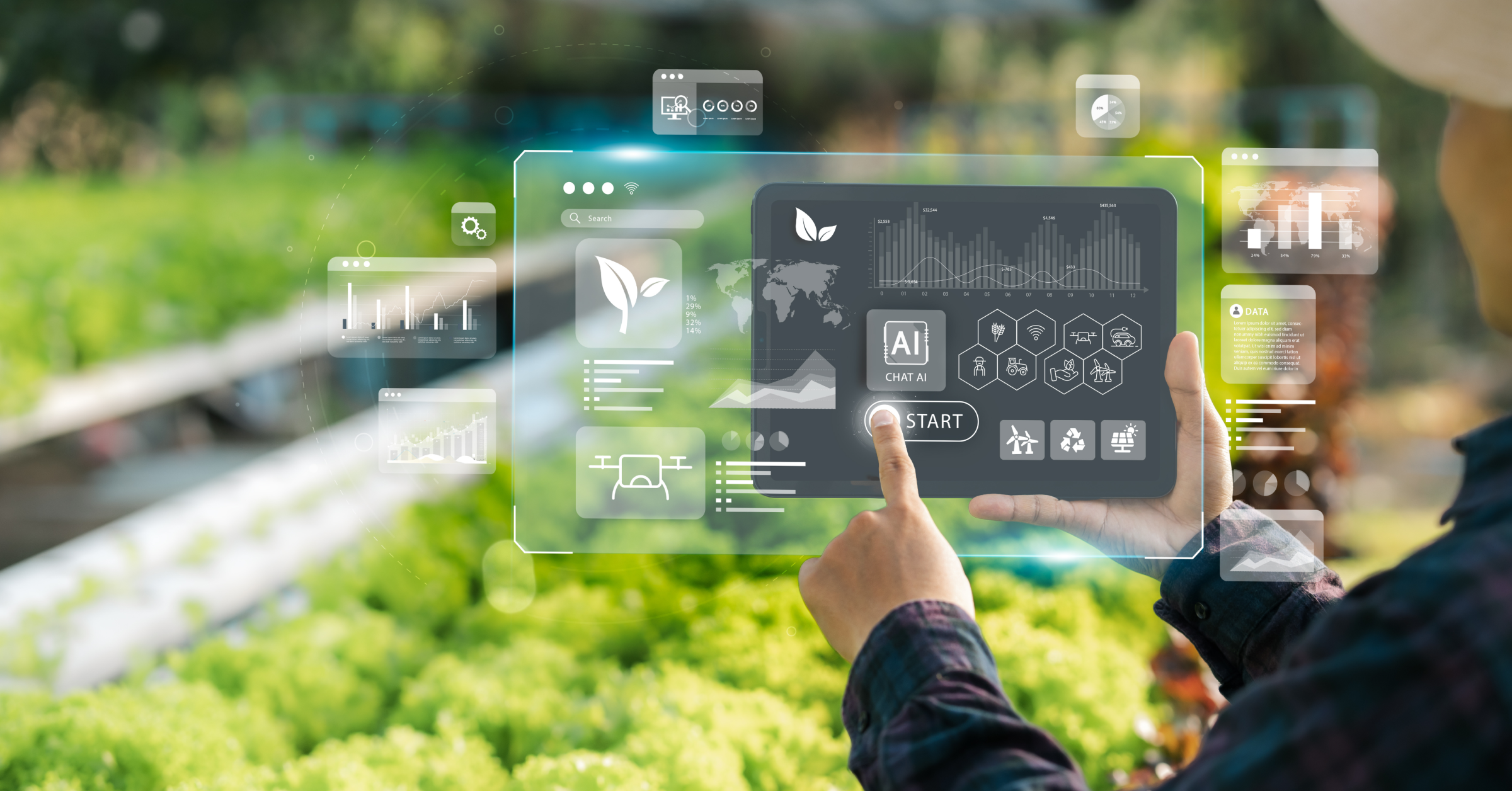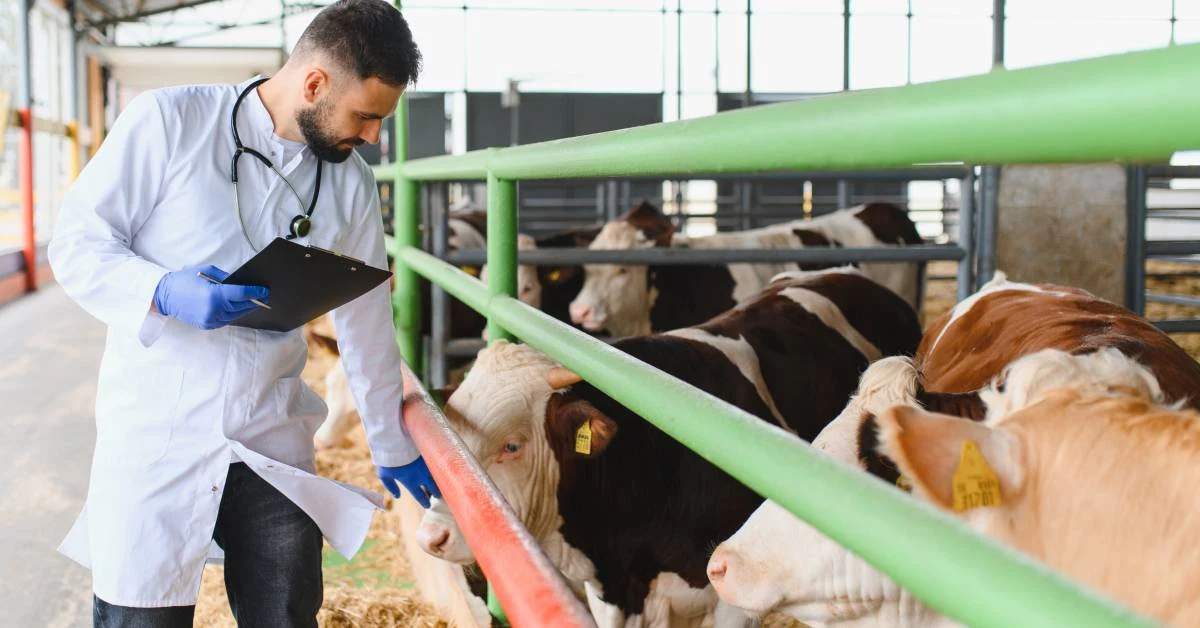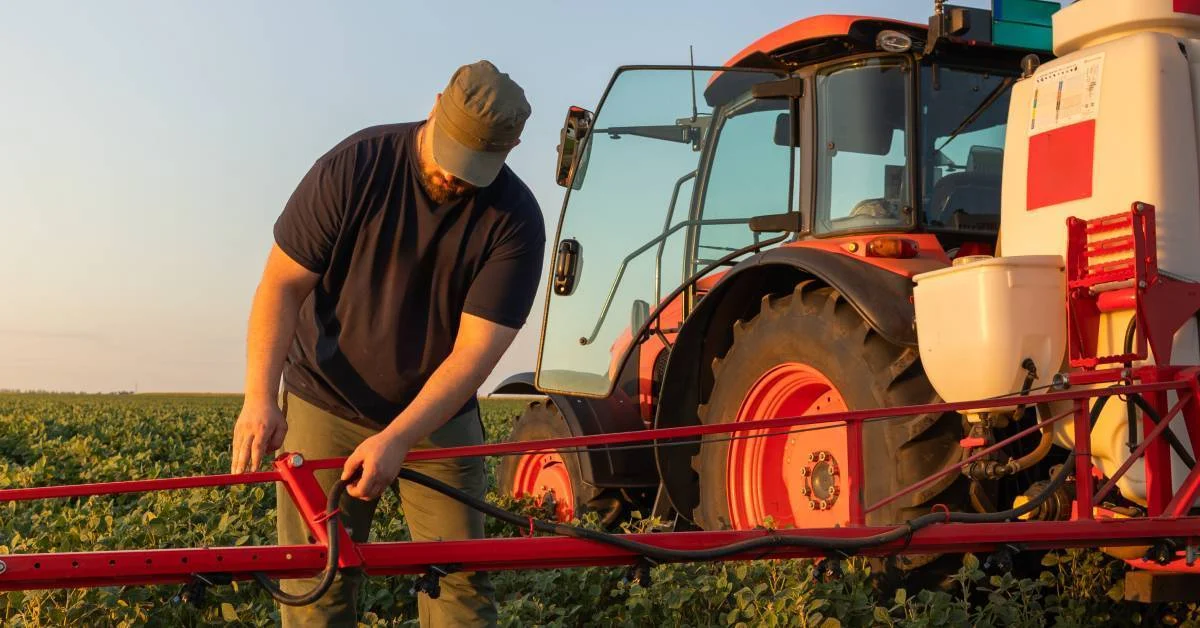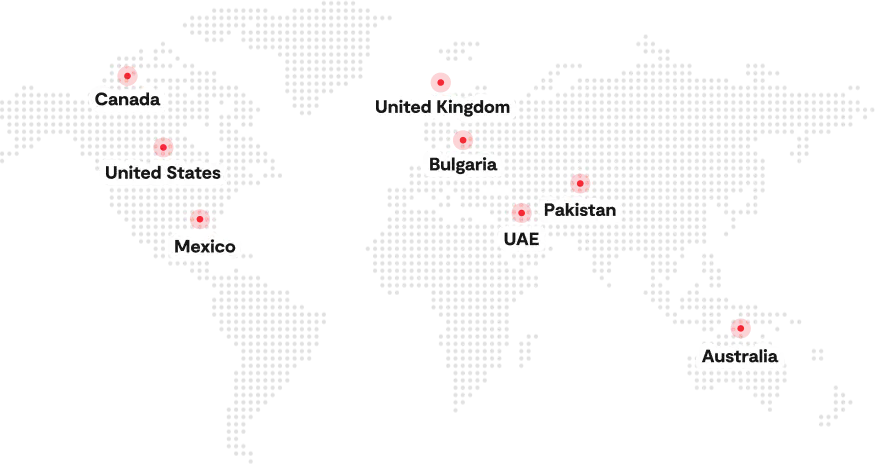Agricultural technology adoption in developing countries faces significant hurdles that prevent it from reaching its full potential. While the tech industry is growing globally, farmers in regions with limited access to resources often cannot benefit from the latest advances in farm technology.
Despite the growing availability of solutions like precision farming, smart irrigation, and farm management software, the agricultural technology adoption process remains slow. Technology is crucial for enhancing food security, sustainability, and productivity, especially in a world where the population is expected to reach 9.7 billion by 2050, intensifying the pressure on food production systems.
Yet, despite these benefits, farmers resist the shift towards technology in their practices. In parallel, agriculture technology marketing has seen positive trends, with investments in agriculture tech rising yearly. So, what’s behind the paradox? Why do farmers hesitate to use technology even when it promises to increase yields, improve efficiency, and help tackle global challenges like climate change?
In this article, we will explore the key challenges to adopting agricultural technology in the developing world and explain why even the most promising solutions struggle to gain traction.
Understanding Agricultural Technology Adoption
Agricultural technology adoption refers to the process by which farmers incorporate new technologies into their farming practices. With the rise of the AgTech industry, various tools have emerged to help farmers improve efficiency, boost productivity, and make farming more sustainable.
From smart irrigation systems to precision farming techniques, these technologies are designed to transform agriculture and ensure food security. However, when it comes to agricultural technology adoption, particularly in developing countries, faces several challenges that hinder widespread use.
The Adoption Gap in Developing Countries
Despite the potential benefits of agricultural technology, the adoption rate in developing countries remains low. A recent report found that fewer than 30% of farmers in sub-Saharan Africa use any form of technology to improve their farming practices.
This statistic highlights a significant gap between the availability of farm technology and its actual use. While agriculture tech solutions have proven effective in other parts of the world, they face challenges in reaching rural areas with limited resources.
Barriers to Adoption – Awareness and Skepticism
One of the main reasons behind the slow agricultural technology adoption is a lack of awareness. Many farmers, especially in remote areas, are unaware of the latest tech tools. Despite strong agriculture technology marketing efforts, the information doesn’t always reach the intended audience. Moreover, some farmers are skeptical about whether these technologies will work in their specific environments or if the benefits outweigh the initial costs, leading to resistance.
Financial Challenges for Smallholder Farmers
Another significant barrier to agricultural technology adoption is financial constraints. While technology for farmers is becoming more affordable, the upfront investment required remains a challenge for many smallholder farmers. For instance, even essential tools like mobile farming apps or soil sensors can be too expensive for farmers in developing regions.
Optimism for the Future of Agricultural Technology
Despite the challenges, there is growing optimism about the future of agricultural technology adoption. The agtech industry is expanding, and more affordable, tailored solutions are being developed to meet the needs of farmers in developing countries.
These solutions are increasingly designed with local conditions in mind, ensuring they are affordable and effective. With continued innovation and the development of financing options, the adoption of agricultural technology is slowly gaining momentum in the developing world.
The Farmer Adoption Problem
Market Overview – The Growth of Agtech and Its Untapped Potential
The AgTech industry has grown significantly over the past decade, with investments flowing into precision agriculture and farm management software. This growth is driven by the need for more efficient, sustainable farming solutions to address the growing global population’s challenges.
However, despite the increasing availability of farm technology, the potential for its agricultural technology adoption remains untapped, mainly in many developing regions. According to McKinsey Insights, the global tech market is expected to grow to $22.5 billion by 2025. Still, agricultural technology adoption rates in rural areas remain low, pointing to a disconnect between the availability of technology and its uptake.
Farmer Sentiment – Why Do Many Farmers Hesitate to Adopt New Technologies?
Farmers often hesitate to adopt new technologies, even with clear benefits. One key reason is the uncertainty around the return on investment. Farmers are already dealing with limited resources in many developing regions, and spending money on technology agriculture solutions without a guaranteed payoff can seem risky.
A 2023 survey revealed that 56% of emerging-market farmers cited high upfront costs as the primary reason for not adopting new technologies. Additionally, some farmers have concerns about the complexity of using tech in agriculture, especially when it involves changing long-established farming practices. This hesitation is compounded by a lack of local support and training, further slowing adoption.
Key Areas In AgTech Submarkets
The vast AgTech industry has several submarkets offering solutions tailored to specific farming needs. Farm-management software is one of the most popular areas, helping farmers track their activities, manage resources, and optimize agriculture production. Precision agriculture, which uses data-driven insights to manage crops and soil more efficiently, is also gaining traction, though its agricultural technology adoption is slow in regions with limited infrastructure.
Additionally, sustainability-focused solutions, such as tech-driven water management and eco-friendly farming practices, are becoming increasingly important as the world faces environmental challenges. However, even though these areas show significant promise, agricultural technology adoption remains low due to the barriers farmers face, from financial constraints to a lack of awareness.
Despite these hurdles, the agtech industry continues to innovate, and solutions are becoming more accessible. With the right support and education, many technologies could help farmers increase yields, reduce costs, and move toward more sustainable practices. The challenge remains in overcoming the barriers to agricultural technology adoption and ensuring that these solutions are within reach for farmers who need them the most.
Key Challenges In Agricultural Technology Adoption
Adopting agricultural technology is crucial for transforming farming, especially in developing regions, but several challenges prevent widespread use. These challenges can be grouped into economic, technological, trust, and socio-cultural barriers. Addressing these barriers will increase agricultural technology adoption and unlock the tech industry’s potential.
1. Economic Barriers
High Costs & Unclear ROI
The high initial cost is one of the biggest challenges farmers face when considering new farm technology. Farmers often struggle to justify the expense of the latest technologies without precise, proven data showing how these innovations will improve profitability.
The benefits of technology agriculture solutions, such as increased crop yields or reduced labor costs, may not be immediately visible, making farmers hesitant to invest. As a result, many take a “wait-and-see” approach, waiting for others to prove that the technology works before making any financial commitment.
Limited Access to Credit & Financing
Another significant barrier is the lack of financial resources. Many smallholder farmers, especially in rural areas, cannot access credit or financing options to invest in agriculture tech. Government subsidies can help, but these programs are often insufficient or not targeted to the farmers who need them the most. Private funding initiatives also exist but are difficult for farmers to access without financial literacy or support systems.
2. Technological Barriers
Complexity & Usability Issues
New AgTech solutions are often complex and require specialized knowledge to operate. This complexity can discourage farmers from adopting farm technology, especially when they are already managing their farms without technological tools.
Innovations in agriculture technology must be user-friendly and easily adaptable for broader agricultural technology adoption. Simpler, intuitive tools will encourage more farmers to try new solutions without feeling overwhelmed.
Digital Infrastructure Gaps
Many rural areas still lack reliable high-speed internet and mobile connectivity, which are necessary for implementing tech in agriculture. Farmers cannot access cloud-based solutions or real-time data without proper digital infrastructure, making many AgTech tools ineffective in these regions.
3. Trust & Behavioral Barriers
Skepticism About New Technology
Many farmers are understandably skeptical about new technology. This fear often stems from previous experiences with innovations that failed to deliver promised results. Farmers may also fear that new technologies will disrupt their well-established working methods. Trust in the effectiveness of agricultural technology is crucial for overcoming this barrier.
Resistance to Data Sharing & Privacy Concerns
Another significant trust issue is farmers’ reluctance to share farm data with agribusinesses. Farmers are often concerned about the privacy of their data and the potential for misuse. As the tech industry grows, finding ways to ensure data privacy and security will be critical in overcoming these concerns.
4. Socio-Cultural & Policy Barriers
Land Tenure Issues
In many regions, farmers lack secure land tenure, making them hesitant to invest in long-term agricultural technology. Without stable land rights, farmers may be reluctant to adopt technologies that require long-term investments, as they are unsure of their ability to continue farming the land.
Regulatory Uncertainty & Policy Gaps
Lastly, inconsistent government policies and regulatory uncertainty can hinder the large-scale adoption of technology in agriculture. In some areas, the lack of clear policy frameworks around AgTech solutions makes it difficult for farmers to know which technologies the government supports or incentivizes.
How Does Folio3 AgTech Help to Overcome These Challenges?
Folio3 AgTech is dedicated to helping farmers and agricultural businesses overcome the challenges of adopting agricultural technology. By offering targeted solutions and strategies, we help make technology adoption more accessible, affordable, and practical for farmers in developed and developing regions.
1. Financial & Economic Solutions
One key barrier to adopting agricultural technology is the high upfront cost. Folio3 AgTech provides lower-cost crop management solutions and provides smallholder farmers with subsidies and financial support. We work with local governments and international organizations to help farmers access affordable technology, reducing the financial burden.
Additionally, we offer flexible financing models, allowing farmers to pay for the technology over time. This makes it easier for them to adopt new farm technology without straining their budgets. With these financial solutions in place, technology adoption becomes more feasible for farmers of all scales.
2. Technology Simplification & Accessibility
The complexity of new solutions is a significant hurdle in adopting agricultural technology. Folio3 AgTech focuses on simplifying technology for farmers by developing innovative, easy-to-use innovations. Our solutions include smartphone-based applications that are more accessible to farmers, especially in rural areas where mobile phone usage is widespread.
Furthermore, we provide digital literacy training to ensure farmers feel confident using these technologies. By offering low-tech solutions like farm record-keeping software that don’t require advanced technical knowledge, we ensure that agricultural technology is not just for large-scale farmers but also for smallholders. This approach makes the transition to tech in agriculture smoother and more practical for everyone involved.
3. Building Trust & Awareness
Trust is critical to overcoming resistance to new technologies. Folio3 AgTech helps build this trust through peer learning programs and farmer training initiatives. We also encourage farmers who have successfully adopted technology to share their experiences with others.
These real-life examples are valuable learning opportunities and help build confidence in new agricultural technology. Our training programs are designed to empower farmers with the knowledge they need to make informed decisions and ensure they understand the benefits of adopting agricultural technology solutions for their specific needs.
4. Strengthening Policy & Infrastructure
We need strong policies and infrastructure for technology adoption to reach its full potential. Folio3 AgTech advocates for government-backed incentives that encourage digital transformation in agriculture. By working closely with policymakers, we push for policies that support agricultural technology, making it easier for farmers to access and implement these tools.
Additionally, we aim to expand digital infrastructure in rural areas by supporting projects that bring high-speed internet and tech support to underserved regions. This expansion is critical for improving farmers’ access to technology and ensuring they can fully benefit from tech-driven solutions.
Conclusion
Overcoming the challenges of agricultural technology adoption requires targeted financial, technological, and infrastructural solutions. Folio3 AgTech’s approach, combining affordability, simplicity, and trust-building, empowers farmers to embrace tech in agriculture. By addressing these barriers, we can unlock the full potential of agriculture technology for a more sustainable future.
FAQs
What Is the Biggest Challenge Facing Agriculture Today?
The biggest challenge is overcoming economic, technological, and behavioral barriers to adopting innovative agricultural technologies.
What Is the Meaning of Agriculture Technology?
Agriculture technology uses advanced tools, machines, and techniques to enhance farming productivity, efficiency, and sustainability.
What Are the Obstacles to Transferring New Agricultural Technologies to Our Local Farmers?
Obstacles include high costs, limited access to financing, lack of digital infrastructure, and resistance to change from farmers.
What Are the Factors Affecting the Adoption of Agricultural Technology in Ethiopia?
Factors include limited access to credit, poor infrastructure, high technology costs, and low digital literacy among farmers.
What Are the 5 Stages of Technology Adoption?
The five stages are awareness, interest, evaluation, trial, and adoption.
What Are the Future Technologies for Agriculture?
Future technologies for agriculture include AI-powered precision farming, drone monitoring, autonomous tractors, and smart irrigation systems.
What Is the Concept of Technology Adoption?
Technology adoption is how individuals or organizations integrate new technologies into their operations for enhanced efficiency and productivity.
What Is the Newest Technology in Farming?
The newest technology in farming includes autonomous tractors, AI-driven crop management, and robotics for planting and harvesting.







